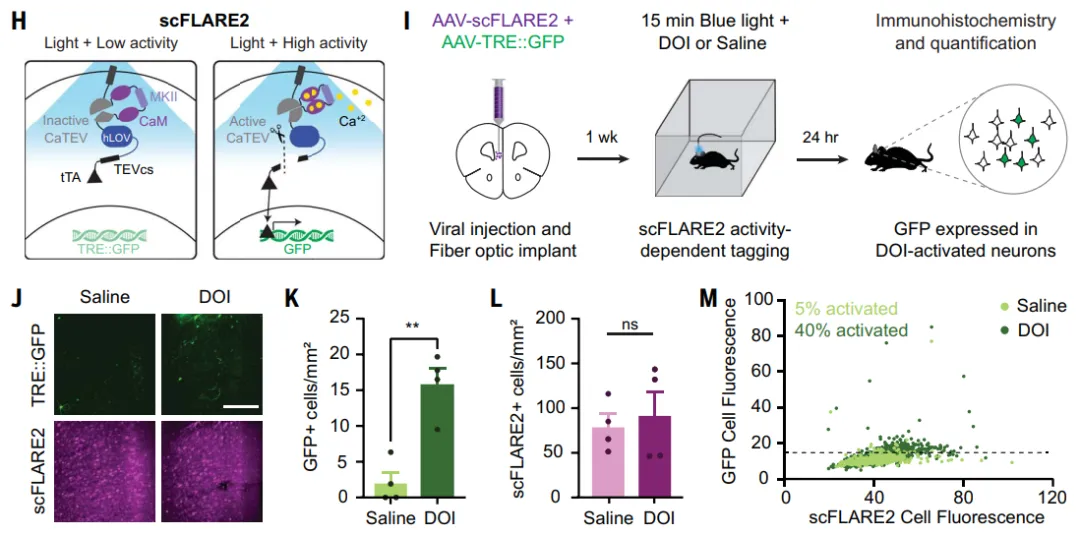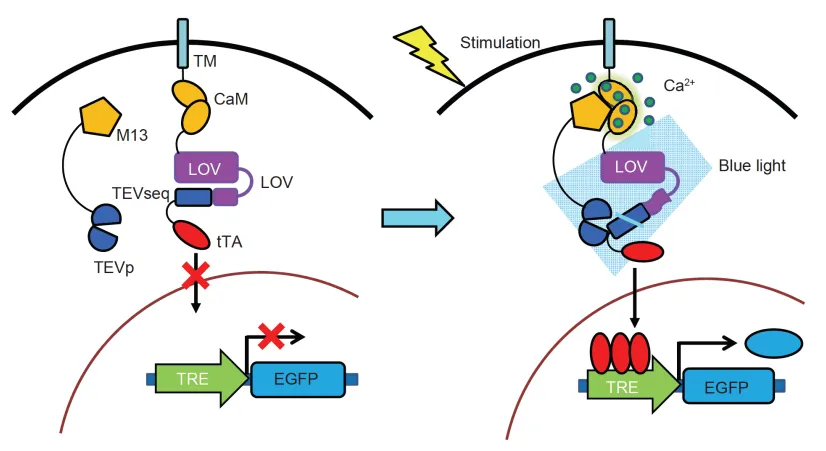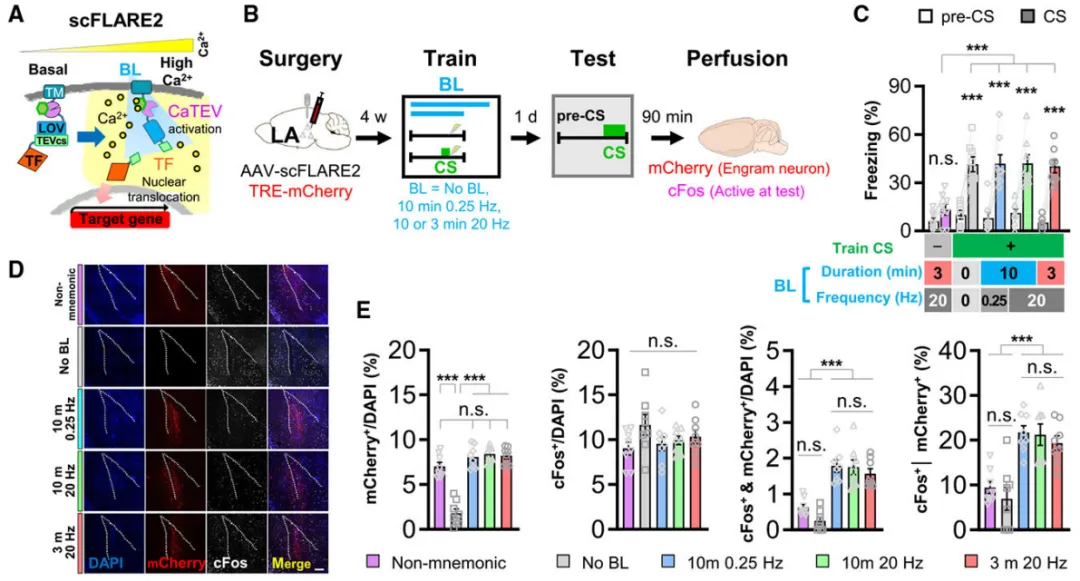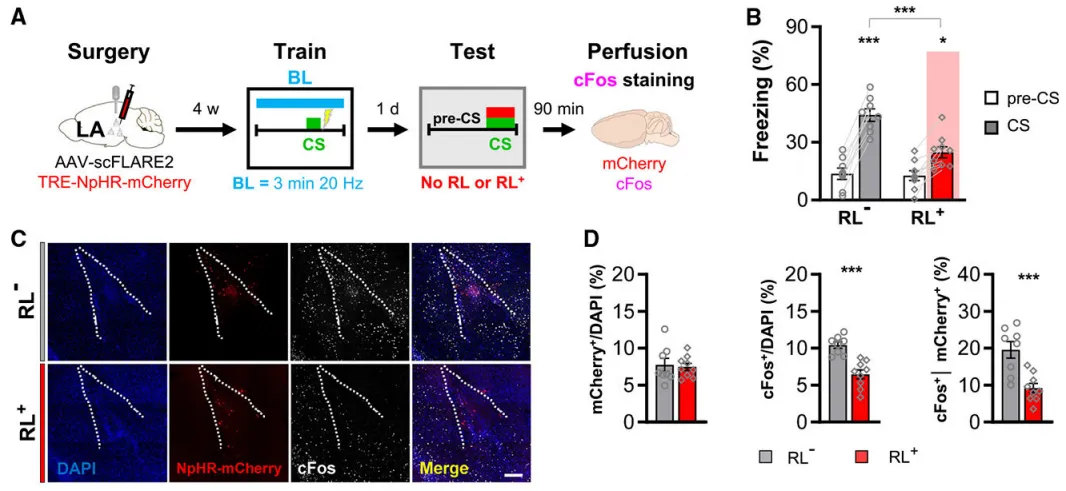Case 2
On November 15, 2024, the research team led by C. K. Kim from the Department of Neuroscience at the University of California published an article titled “Isolation of psychedelic-responsive neurons underlying anxiolytic behavioral states” in the journal Science [3].
Using GRIN lens-based calcium imaging, the researchers observed that the injection of the psychedelic compound 2,5-dimethoxy-4-iodoamphetamine (DOI) immediately increased the activity of approximately 54% of neurons in the medial prefrontal cortex (mPFC). To further investigate the transcriptomic characteristics of DOI-activated neuronal populations, the team injected AAV-scFLARE2 and AAV-TRE-GFP into the mPFC of mice and implanted optical fiber cannulas for blue light delivery to label DOI-activated mPFC neurons.
Mice were treated with DOI or saline, followed by 15 minutes of blue light stimulation to drive scFLARE2 labeling of activated neurons. The mice were sacrificed 24 hours later for histological analysis. Results showed that mice injected with DOI expressed more GFP+ cells compared to saline-treated control mice, with approximately 40% of scFLARE2-expressing cells activated in DOI-treated mice.

Figure 3: Labeling DOI-activated neurons using scFLARE2
To investigate whether reactivation of DOI-labeled neurons has anxiolytic effects, the researchers used scFLARE2 to label DOI-activated neurons and injected the excitatory optogenetic virus AAV-TRE-bReaChES into the mPFC region. The results showed that, compared to the saline group, DOI-treated mice exhibited reduced burying behavior 30 minutes after treatment, though this effect did not persist into the next day. However, on the second day, optogenetic activation of DOI-labeled neurons significantly reduced burying behavior, and the time spent by mice in the open arms of the EPM (elevated plus maze) was significantly increased. These results indicate that light stimulation of DOI-activated neurons in the mPFC 24 hours after drug administration is sufficient to reproduce the acute anxiolytic effect of the drug.

Figure 4: Reactivation of DOI-labeled neurons exerts anxiolytic effects without inducing a psychedelic state.
References:
[1] Wang W, Wildes CP, Pattarabanjird T, Sanchez MI, Glober GF, Matthews GA, Tye KM, Ting AY. A light- and calcium-gated transcription factor for imaging and manipulating activated neurons. Nat Biotechnol. 2017 Sep;35(9):864-871. doi: 10.1038/nbt.3909. Epub 2017 Jun 26. PMID: 28650461; PMCID: PMC5595644.
[2] Jung, J. H., Wang, Y., Rashid, A. J., Zhang, T., Frankland, P. W., & Josselyn, S. A. (2023). Examining memory linking and generalization using scFLARE2, a temporally precise neuronal activity tagging system. Cell reports, 42(12), 113592. https://doi.org/10.1016/j.celrep.2023.113592
[3] Muir J, Lin S, Aarrestad IK, Daniels HR, Ma J, Tian L, Olson DE, Kim CK. Isolation of psychedelic-responsive neurons underlying anxiolytic behavioral states. Science. 2024 Nov 15;386(6723):802-810. doi: 10.1126/science.adl0666. Epub 2024 Nov 14. PMID: 39541450.
Brain Case can provide customized virus packaging services. If you have any needs, please contact bd@ebraincase.com




